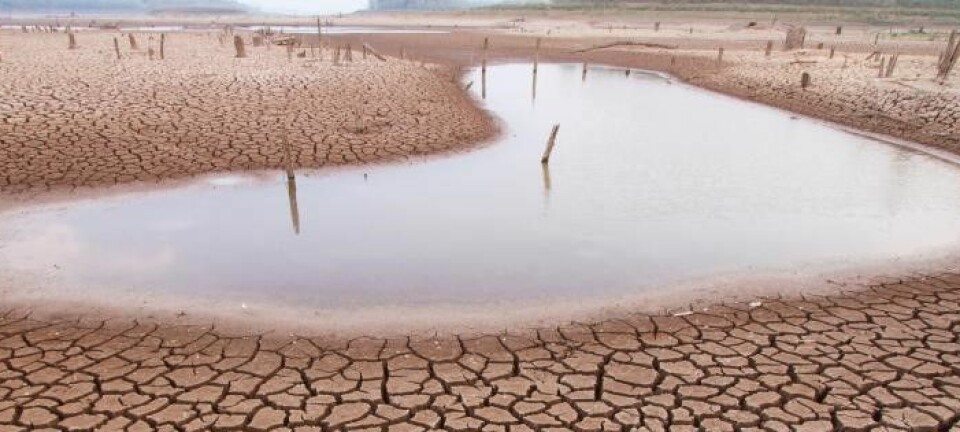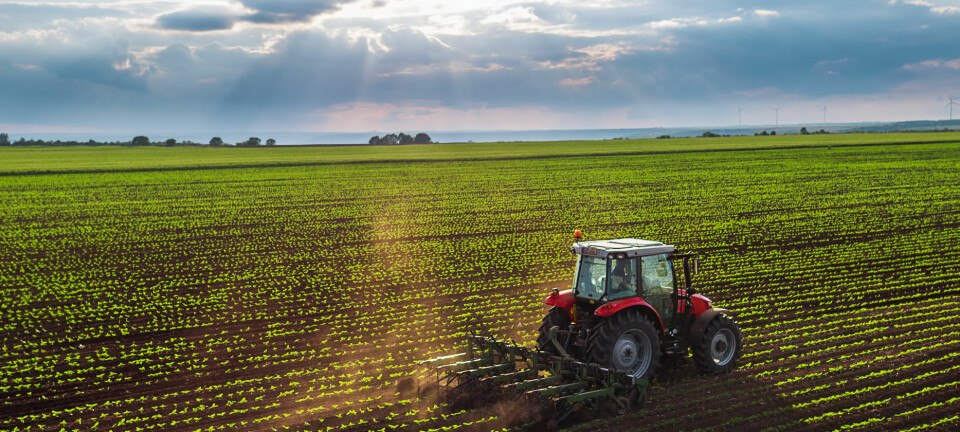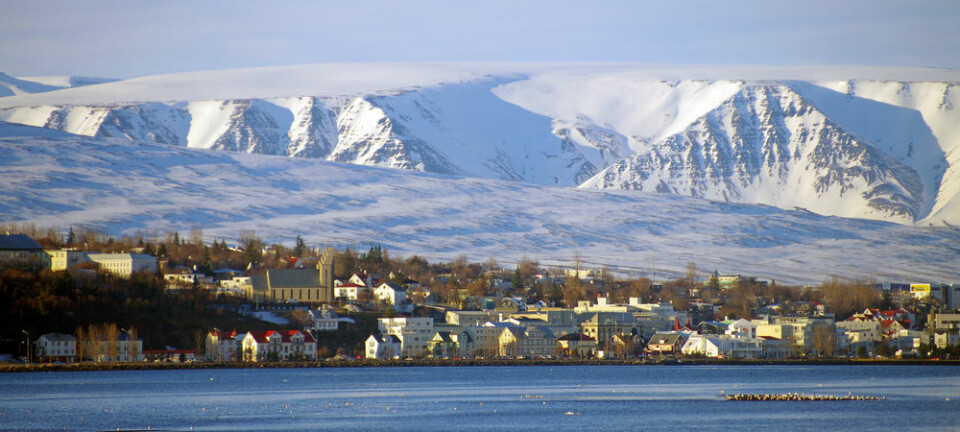Researchers' Zone:

Quinoa is a super crop that can resist future climate change
Quinoa is exceptionally nutritious and robust – it even withstands extreme conditions of drought and salinity. A large new research project wants to uncover the mechanism that makes quinoa so resilient. This is meant to create the basis for future improvement of this unique plant.
The Inca empire was great and powerful. But after it was invaded by the Spanish, it nevertheless succumbed very quickly.
The Incas had had a highly developed agricultural practice, and by the time the Europeans arrived, they had cultivated many plant species.
The new colonisers introduced a system in which the natives cultivated the land for them, and since the colonisers did not show much interest in the Incas’ food, they preferred that they grew plants with which they were already familiar. These were imported from Europe.
Slowly, the original agricultural practices went into oblivion.
Quinoa was rediscovered
In 1989, the American Research Council published the report ‘Lost Crops of the Incas: Little Known Plants of the Andes With Promise for Worldwide Cultivation’. Here, more than twenty crops grown by the Incas were taken into consideration.
There was one plant the Incas preferred to others: Quinoa.
According to the report, the Incas called this plant 'chisiya mama', which means 'mother seed'. The Incas began cultivating this plant 3,000 to 4,000 years ago and, alongside the potato, it was their most popular crop.
It was a food so important that the plant was considered sacred.
And quinoa may turn out to be more than just vital to the Incas of the past. The Carlsberg Foundation has granted 15 million DKK in support of a large research project where we are researching this healthy crop that might be one of the answers to the future global food challenges.
A nutritious and robust plant
The year 2013 was declared by the UN’s General Assembly to be the ‘International Year of Quinoa’, and the UN’s Food and Agriculture Organisation FAO initiated a vast programme to promote the cultivation of quinoa throughout the world.
The fact that quinoa has been revived from oblivion by the UN has two primary reasons.
Firstly, the seeds are exceptionally nutritious. Quinoa seeds contain starch, just like wheat grains do, but have no gluten.
The amino acid composition in the proteins is very similar to the one found in legumes, with a good balance of the essential amino acids, including lysine, which is low in wheat flour.
In addition, the seeds are rich in minerals and vitamins and contain the vital omega-3 fatty acids.
Secondly, the quinoa plant is exceptionally robust. It tolerates drought and salt to a much greater extent than most other plants.
Salt binds water and therefore presents plants with challenges similar to those that drought produces.
Therefore, the FAO sees a potential in quinoa to be grown on marginal land that would otherwise be barren.
As climate change increases, arable land is expected to decrease, which would lead to the need for crops that are able to grow where most other crops cannot.
Goose feet at 4,000 meters
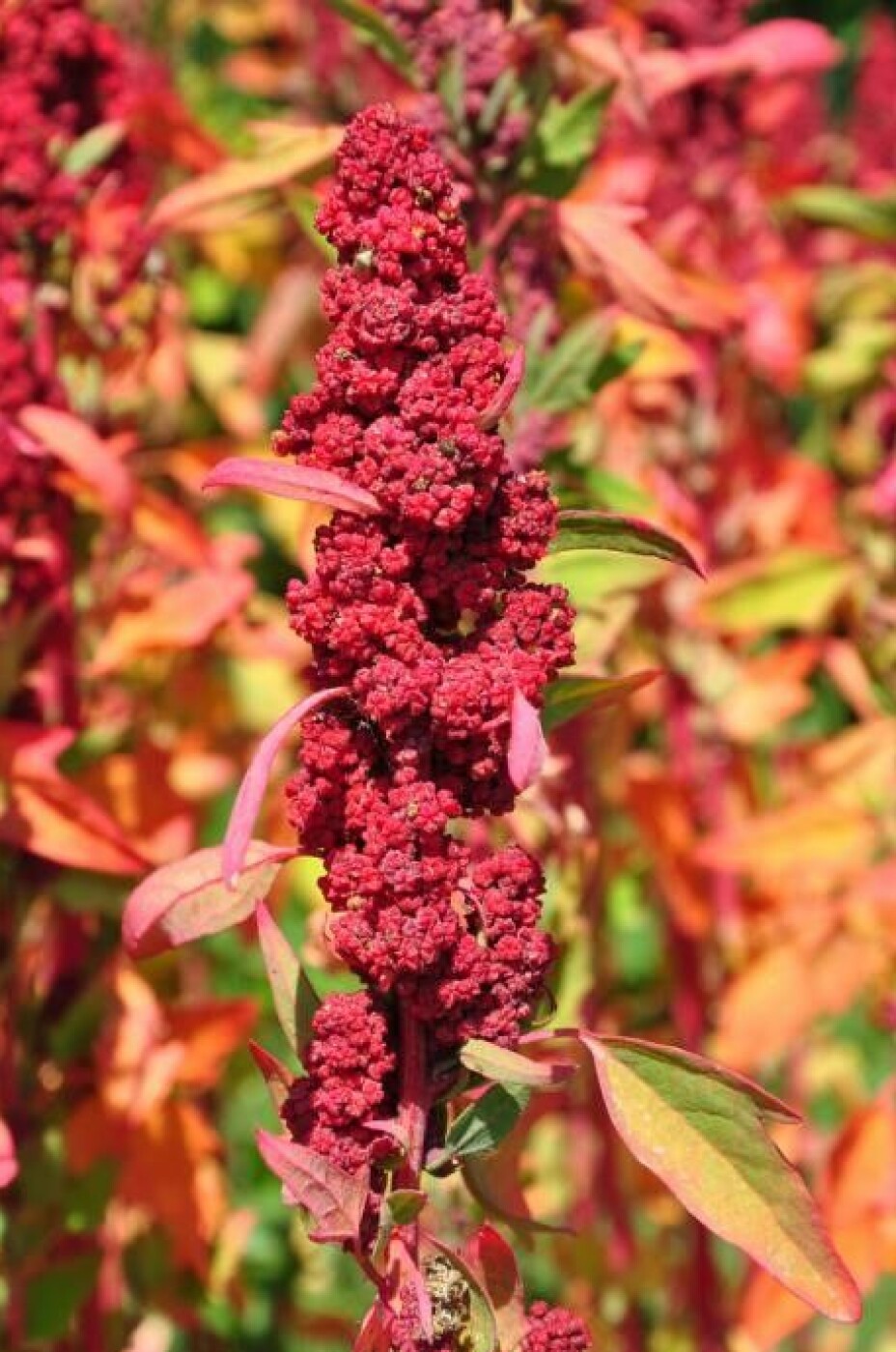
The home of quinoa is the Andes mountains, in the region of Lake Titicaca, where it seldom rains and salt deserts are widespread. Here it thrives at heights of up to 4,000 metres above sea level in an extremely hostile environment where it can be freezing cold (-4o to -8o C) during the night and unbearably hot (35o to 38o C) during the day.
The scientific name for quinoa is Chenopodium quinoa. Chenopodium is Greek and means goose foot. This name refers to the shape of the leaf, which on several of the plants in the family may resemble the webbed feet of a goose.
Quinoa has inconspicuous flowers in a dense inflorescence, but after flowering, a dense assembly of fruit is formed with seeds that can be yellow, red or white.
Most plants hate salt - but quinoa does not
The quinoa plant belongs to the chenopodiaceous family. In Denmark, there are close to 20 wild growing plants of the chenopodiaceous family, which all grow close to the sea on beaches.
This indicates that the ability to tolerate salt in this family of plants is not limited to quinoa.
Something that makes the quinoa plant very interesting scientifically speaking is precisely this ability to tolerate salt (primarily sodium chloride). Few plants in the wild tolerate salt, and virtually none of our cultivated plants do.
Fish tolerate salt water because they are equipped with a biological pump, the sodium-potassium pump, that pumps salt out of the cells. That is why a fish – even though it has lived its whole life at sea and has not drunk anything but saltwater – does not taste salty when we eat it.
Animals as we know them today come from fish that crawled ashore from the sea, and the animals inherited the sodium-potassium pump from the fish. Therefore, compared to plants, we can withstand much more salt than they can, and sodium-chloride in limited amounts is even essential to our vital functions.
The Danish researcher Jens Christian Skou, who passed away in 2018, was awarded the Nobel Prize for his discovery of this pump in 1957.
Evolutionary riddle: Why do terrestrial plants lack a sodium pump?
The closest relatives to terrestrial plants at sea are green algae. Evidently, green algae tolerate salt but how they do that is still uncertain.
Apart from different types of moss, which possess a variation of the sodium-potassium pump, terrestrial plants have entirely lost this pump.
The reason why evolution has led to the loss of a pump that is vital to so many different forms of life continues to be a riddle.
No one knows why we can water quinoa with seawater
Not only does quinoa tolerate salt, it is so resistant to salt that it can be watered with seawater.
The entire genome of the plant was mapped out in 2017, so we know that none of its genes are similar to those of the sodium-potassium pump. Therefore, it is still unclear what underlies the unusual salt tolerance of quinoa.
It has been discussed whether it is due to a special ability either to exclude sodium chloride from the liquid of the soil when it draws up nutrients or to pump it out quickly back into the soil after absorbing it.
It has also been discussed whether sodium chloride is being hidden away in the inner space of the cells or whether quinoa simply tolerates salt better than other plants.
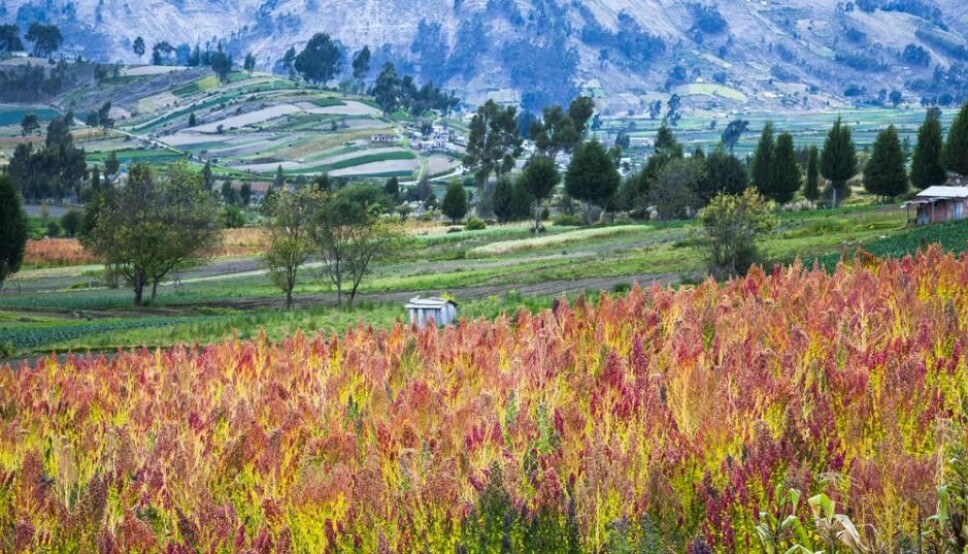
Is the difference in the hairs?
A significant step closer to a solution of the riddle was made when, in 2017, the Tasmanian researcher Sergey Shabala identified the hair on the leaves as a source of the extreme salt tolerance.
Quinoa leaves are densely covered by tiny hairs that give the leaves a mottled grey appearance and that, under the microscope, turn out to be inflated to perfectly round bladders.
Shabala gently brushed the leaves with a common soft powder puff and was able to observe that the hairs easily came off.
A quinoa plant that he had brushed kept on growing normally and did not appear to have been damaged in any way.
But when the plant that had been brushed was watered with salty water, it no longer tolerated salt.
Preliminary model of the process in quinoa hair cells
In 2018, a German research group led by Rainer Hedrich mapped out all the active genes in the hairs of the leaves of the quinoa plant.
There are no genes that are active in the hairs that cannot be found in plants that do not tolerate salt.
However, several genes are more active in the bladder-shaped hair cells than in other cells of the leaf. Many of these genes provide codes for so-called transport proteins, which are found in the membranes of the cells, and several of them can transport sodium and chloride in other systems.
Based on this work, a model has been developed to describe how the transport of salt takes place out into the hairs of the quinoa plant.
This is still just a model, and it has not yet been confirmed by other researchers.
Can quinoa save the planet?
As mentioned, the Carlsberg Foundation has supported a major research project that I am in charge of and which, through genetic approximation, is intended to identify the mechanism that enables quinoa to tolerate salt.
The intended work will therefore be able to confirm or refute the model which, for the time being, attempts to explain this property.
The research project is based on a new technology developed in the Carlsberg Research Laboratory to localise genetic variation in certain genes in large quantities of plants.
As such, the goal is to identify, among hundreds of thousands of quinoa plants to be grown here in Denmark, plants that have variants of the genes that may potentially lead to salt tolerance. Following this, the ability of these plants to withstand salt and drought will be studied.
If plants that have variants of these genes, or even have non-functioning versions of them, also have altered salt and drought tolerance, it will be a substantial genetic argument as to their significance for this property.
We want to develop robust climate-quinoa
The ambition of the project, which is still only in its initial phases, is not just to gain knowledge of what it is that makes quinoa so formidable at tolerating salt.
The aim is also that the technology developed to find gene variations will be useful to further improve quinoa in the future.
The aim is a healthy and robust crop that can be grown in our part of the world and which is already equipped to withstand climate change.
The project is supported by the Carlsberg Foundation. The Carlsberg Research Laboratory is a partner in the project. The project is being carried out in cooperation with Sergey Shabala and Rainer Hedrich.
Translated by Stuart Pethick, e-sp.dk translation services. Read the Danish Version at Videnskab.dk's Forskerzonen.
Sources
Michael Broberg Palmgren’s profile (KU)
FAO-rapport: 'State of the art: Report on quinoa around the world in 2013'
'The genome of Chenopodium quinoa', Nature, 2017, DOI: 10.1038/nature21370
———

